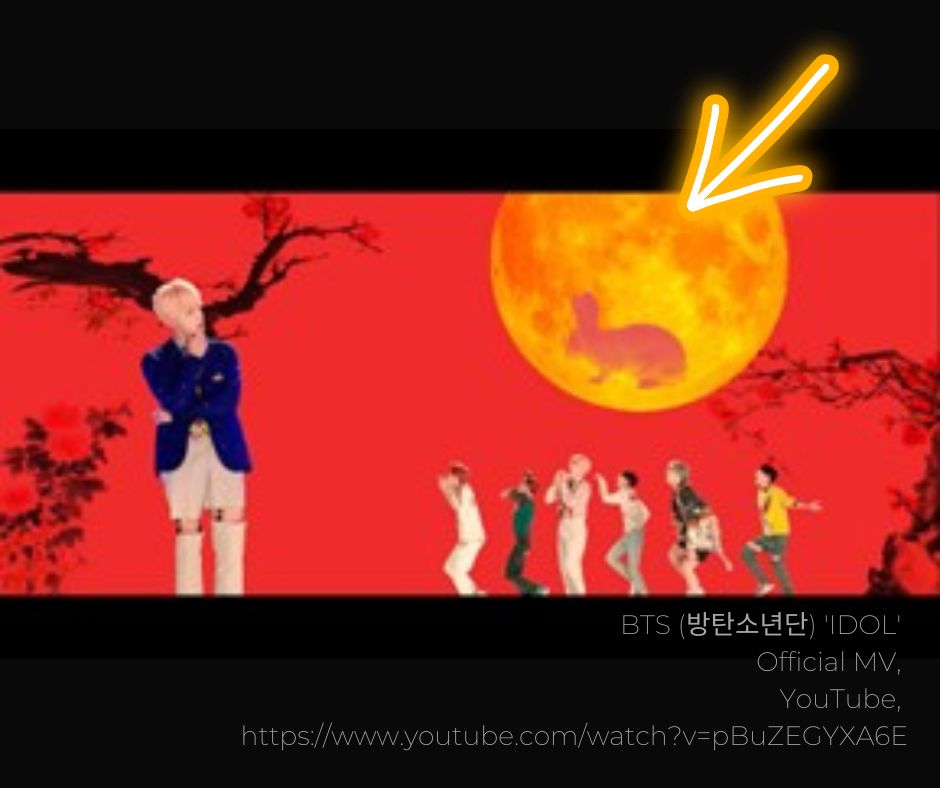
It is undeniable that music and dance have an immense intercultural power, one reason being that it facilitates communication beyond words. Properly directed, it can be an invaluable tool for promoting cultural identity that can educate audiences from different nations, hopefully increasing respect and decreasing racism. It can also bring us pleasant surprises of cultural interconnectivity between countries. In this article, I would like to better explain this idea with a video of a modern Korean music phenomenon, BTS.
A few years ago, while expanding my admiration and love for Korean culture, I entered the enchanting world of kpop, like many other people, thanks to BTS. One of the reasons the boys' style struck me the most was when I watched their Idol video (my favourite one). This fascinating video refers to various aspects of Korean culture. In a versatile and fun manner, they share with us, the audience, cultural elements such as folk dancing lions of Bukcheong Saja Noreum tradition. We can also appreciate an enormous white tiger -in Korean culture, tigers symbolize strength and power and are often perceived as the guardian spirit of Korean people. Similarly, in one part of the video, the boys wear a modern version of the hanbok (Korean clothing) while incorporating parts of a traditional dance called Bongsan Talchum in their choreography by jumping high and extending the movement with the whole body.
But the cultural reference that I want to focus on in this article is that of the rabbit on the moon.
BTS's Idol video came to mind due to two reasons. The first is that we are in the year of the rabbit according to the Chinese calendar, and we are in April, when we celebrate Easter. One of the most traditional imageries in Canada is the long-awaited rabbit that brings coloured eggs for children to find. The origin and relationship of the rabbit with Easter is still a mystery since there is no formally established relationship beyond suppositions, one of which is its ability to reproduce so fast related to the renewal of life that Easter represents.
The second, and main, reason I want to talk about BTS's Idol video is that being a Mexican immigrant in Canada the rabbit on the moon in Korean mythology made me think of in Mexican mythology, more specifically Nahua (the Aztecs belonged to this culture), in which there is also a legend about a rabbit on the moon.
The legend originates from the Buddhist tradition, and its account varies somewhat between Asian countries. In Korea, there is a major three-day mid-autumn harvest festival called Chuseok. In the Chuseok tradition, the legend of the rabbit on the moon goes like this: a fox, a monkey, and a rabbit are dedicated students of Buddhism. One day, the Emperor of Heaven decides to test their faith. The emperor disguises himself as a beggar and asks these three animals for food. The fox brings him fish, the monkey fruit, and the rabbit -being as little as he is- some grass. Due to the dim offering of the rabbit, he sets fire to that grass and jumps in the flames to sacrifice himself as food to the beggar. At such a gesture, the emperor was so moved that he named the rabbit guardian of the moon, thus creating the image of the bunny making rice cakes on the moon.
Let us now turn to the Nahuatl legend. One day, the great Aztec god Quetzalcoatl visited the Earth to observe the world closely. To go unnoticed, he took the form of an ordinary man. After visiting various villages on foot, the god marvelled at the beauty of nature. He was so happy on his long walk that he forgot to eat and rest for several days. One night, tired and hungry, he sat to admire the landscape. Beside him sat a small rabbit. The rabbit was eating grass and a carrot while admiring the moon's beauty and stars. He offered to share his food with the god, but Quetzalcoatl would not take his food from any living being. However, the god's stomach sounded like thunder falling from the sky. When the rabbit realized that the god would starve, he offered to sacrifice himself as food to the young man so he would continue his journey. His words touched the heart of the god so much that he took the bunny in his arms and gave him a trip to see up close the stars that the rabbit had observed with so much love. Before returning him to Earth, the god brought the bunny really close to the moon and stamped its silhouette on it so that humans would know of his goodness forever.